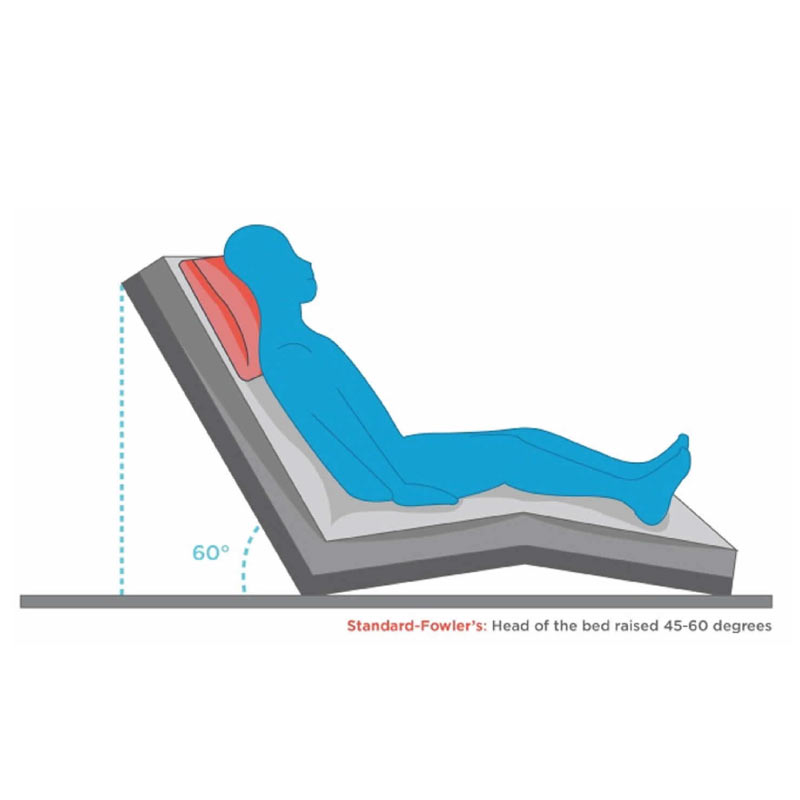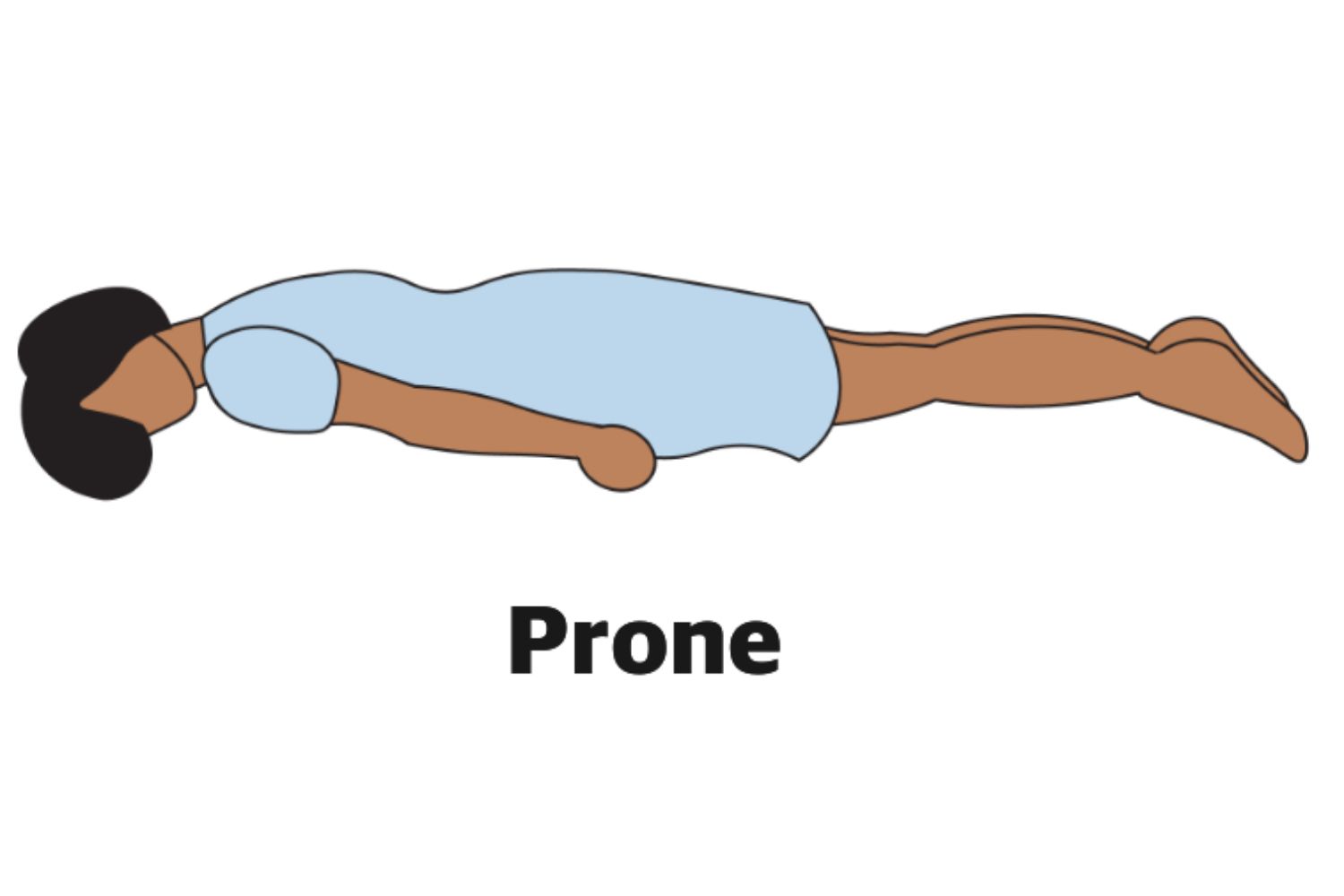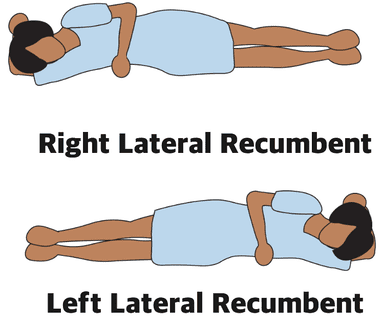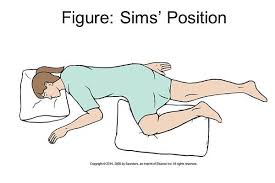Module 3 Summer Key Terms
1/58
There's no tags or description
Looks like no tags are added yet.
Name | Mastery | Learn | Test | Matching | Spaced |
|---|
No study sessions yet.
59 Terms
Fowler's position
A semi-sitting position; the head of the bed is raised to a 45 to 60-degree angle to facilitate breathing and comfort.

supine position
The back laying or dorsal recumbent position

prone position
The person lies on the abdomen with the head turned to one side.

lateral position
The person lies on one side or the other; side-lying position.

Sims position
A variation of the lateral position where the person lies on their left side, with the right knee bent and drawn up towards the chest.

Friction
Rubbing together
Shearing
Skin sticks when sliding on a surface.
Dangling
hanging loosely to help restore blood flow
Logrolling
Turning the person as a unit, in alignment, with 1 motion.
stand pivot transfer
A way of transferring a person
lateral transfer
When a person moves between 2 horizontal surfaces.
transfer
How a person moves to and from a surface; moving the person to a new room within the agency.
Active ROM exercises
Done by the patient
Passive ROM exercises
The nurse does the exercises
Active Assistive ROM exercises
The person does the exercises with some help.
orthotic device
A device that helps support and align a limb and improve its functioning and helps prevent or correct deformities.
AFO
ankle foot orthosis
brace
To make stronger by giving support to
disability
a mental or physical impairment that substantially limits one or more major life activities
Acute Disability
short course, recovery is complete
Chronic Disability
Long-term impairment affecting daily functioning.
Restorative nursing
Care focused on maintaining a patient's current level of function and preventing decline.
You lift with your...
Legs and not your back.
MSD
Musculoskeletal disorder
How often do you reposition someone?
Every 2 hours
If you think you have injured yourself, you should...
Report it immediately
What if a patient is too big for a mechanical lift?
Tell the nurse. Do not risk moving them despite the weight limit.
What do the nurse and care plan tell you about what procedures to use?
The nurse and care plan tell you what procedure to use.
What prevents saggy beds?
Bed boards.
What does exercise do?
Prevents deconditioning.
Bedrest does...
-Reduces physical activity
-Reduces pain
-Encourages rest
-Regains strength
What do foot boards prevent?
Foot drop/plantar flexions
Walking with a cane
-used in the strong hand
-Single and quad canes are most common
-6-10 inches ahead
Positioning
Strategic placement of a patient to maintain body alignment and prevent skin breakdown.
Mechanical Lifts
Equipment used to safely lift and transfer patients, reducing strain on caregivers.
stretcher
A device used for transporting patients in a reclined position.
Positioning Devices
Pillows, wedges, and other items used to maintain proper body alignment.
ROM
range of motion
ADL
activities of daily living
Ambulation
ability to walk
prosthesis
artificial body part
Rehabilitation
The process of restoring a person to good health or useful life.
aphasia
impairment of language
dysphagia
difficulty swallowing
Abduction
Movement away from the midline of the body
Adduction
movement toward the midline
atrophy
The decrease in size or the wasting away of tissue
contracture
decreased motion and stiffness of a joint caused by the shortening of a muscle
Dorsiflexion
Bending the toes and foot up at the ankle
extension
Straightening a body part
external rotation
turning the joint outward
Flexion
Bending a body part
internal rotation
turning the joint inward
opposition
touching the thumb to any other finger
plantar flexion
Bends the foot downward at the ankle
Postural hypotension (orthostatic hypotension)
drop in blood pressure related to change in position (supine/seated to standing), caused by pooling of blood in the veins, decrease in venous return, and decreased cardiac output
Pronation
turning the joint downward
Supination
turning the joint upward
syncope
fainting or sudden loss of consciousness